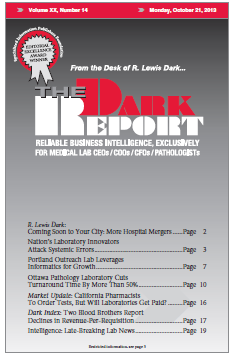CEO SUMMARY: Motivated by the goal of delivering more value to clinicians and client hospitals, the lab team at TriCore Reference Laboratories in Albuquerque, New Mexico, is proactively introducing new services. One such initiative is to travel to hospitals to participate in rounds and consult with physicians regularly. Another initiative improved the accuracy of C. […]
To access this post, you must purchase The Dark Report.


